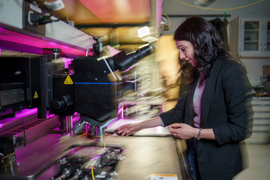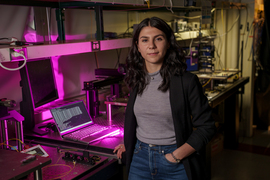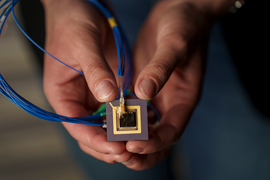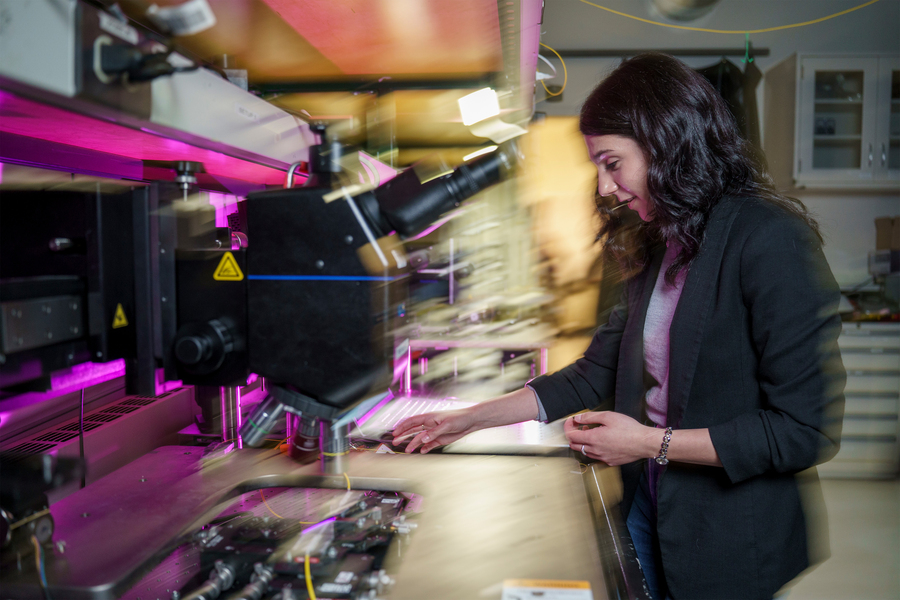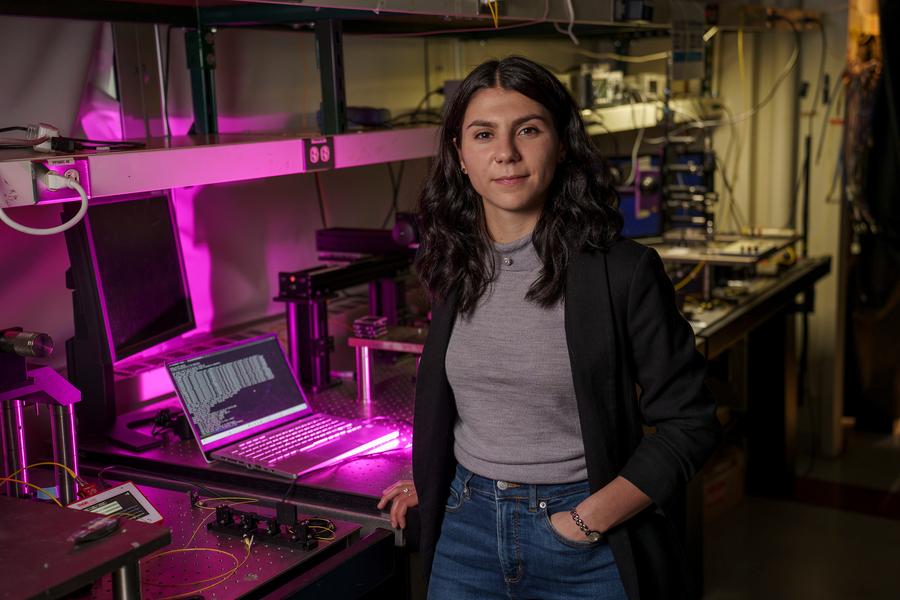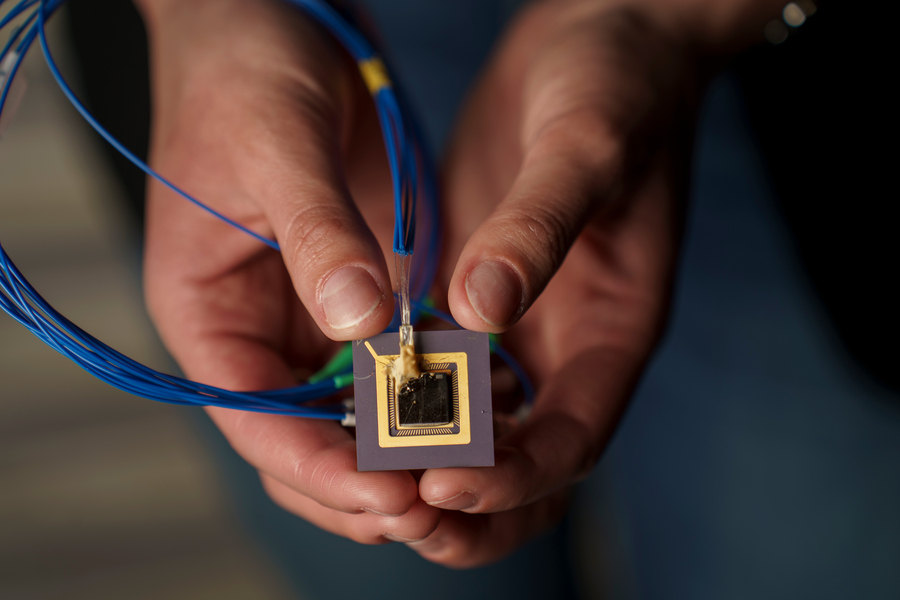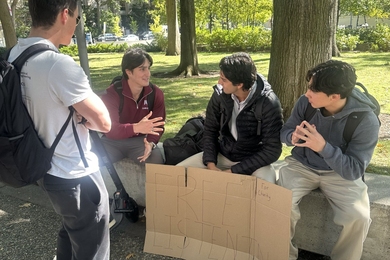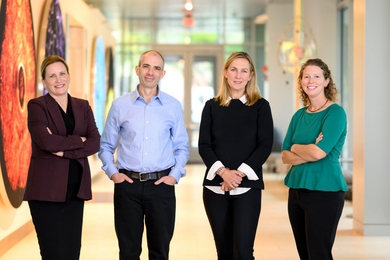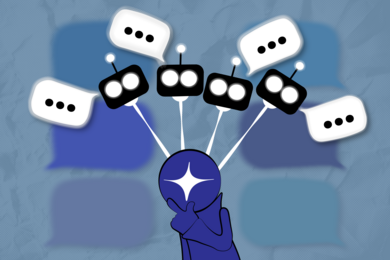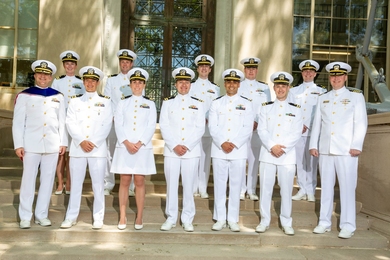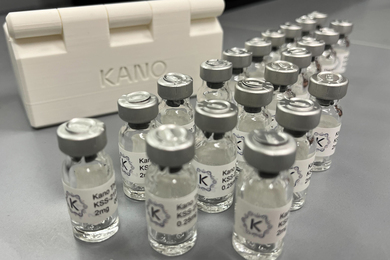Audio
Inspired by the “Harry Potter” stories and the Disney Channel show “Wizards of Waverly Place,” 7-year-old Sabrina Corsetti emphatically declared to her parents one afternoon that she was, in fact, a wizard.
“My dad turned to me and said that, if I really wanted to be a wizard, then I should become a physicist. Physicists are the real wizards of the world,” she recalls.
That conversation stuck with Corsetti throughout her childhood, all the way up to her decision to double-major in physics and math in college, which set her on a path to MIT, where she is now a graduate student in the Department of Electrical Engineering and Computer Science.
While her work may not involve incantations or magic wands, Corsetti’s research centers on an area that often produces astonishing results: integrated photonics. A relatively young field, integrated photonics involves building computer chips that route light instead of electricity, enabling compact and scalable solutions for applications ranging from communications to sensing.
Corsetti and her collaborators in the Photonics and Electronics Research Group, led by Professor Jelena Notaros, develop chip-sized devices which enable innovative applications that push the boundaries of what is possible in optics.
For instance, Corsetti and the team developed a chip-based 3D printer, small enough to sit in the palm of one’s hand, that emits a reconfigurable beam of light into resin to create solid shapes. Such a device could someday enable a user to rapidly fabricate customized, low-cost objects on the go.
She also contributed to creating a miniature “tractor beam” that uses a beam of light to capture and manipulate biological particles using a chip. This could help biologists study DNA or investigate the mechanisms of disease without contaminating tissue samples.
More recently, Corsetti has been working on a project in collaboration with MIT Lincoln Laboratory, focused on trapped-ion quantum computing, which involves the manipulation of ions to store and process quantum information.
“Our team has a strong focus on designing devices and systems that interact with the environment. The opportunity to join a new research group, led by a supportive and engaged advisor, that works on projects with a lot of real-world impacts, is primarily what drew me to MIT,” Corsetti says.
Embracing challenges
Years before she set foot in a research lab, Corsetti was a science- and math-focused kid growing up with her parents and younger brother in the suburbs of Chicago, where her family operates a structural steelwork company.
Throughout her childhood, her teachers fostered her love of learning, from her early years in the Frankfort 157-C school district through her time at the Lincoln-Way East High School.
She enjoyed working on science experiments outside the classroom and relished the chance to tackle complex conundrums during independent study projects curated by her teachers (like calculating the math behind the Brachistochrone Curve, or the shortest path between two points, which was famously solved by Isaac Newton).
Corsetti decided to double-major in physics and math at the University of Michigan after graduating from high school a year early.
“When I went to the University of Michigan, I couldn’t wait to get started. I enrolled in the toughest math and physics track right off the bat,” she recalls.
But Corsetti soon found that she had bitten off a bit more than she could chew. A lot of her tough undergraduate courses assumed students had prior knowledge from AP physics and math classes, which Corsetti hadn’t taken because she graduated early.
She met with professors, attended office hours, and tried to pick up the lessons she had missed, but felt so discouraged she contemplated switching majors. Before she made the switch, Corsetti decided to try working in a physics lab to see if she liked a day in the life of a researcher.
After joining Professor Wolfgang Lorenzon’s lab at Michigan, Corsetti spent hours working with grad students and postdocs on a hands-on project to build cells that would hold liquid hydrogen for a particle physics experiment.
As they collaborated for hours at a time to roll material into tubes, she peppered the older students with questions about their experiences in the field.
“Being in the lab made me fall in love with physics. I really enjoyed that environment, working with my hands, and working with people as part of a bigger team,” she says.
Her affinity for hands-on lab work was amplified a few years later when she met Professor Tom Schwarz, her research advisor for the rest of her time at Michigan.
Following a chance conversation with Schwarz, she applied to a research abroad program at CERN in Switzerland, where she was mentored by Siyuan Sun. There, she had the opportunity to join thousands of physicists and engineers on the ATLAS project, writing code and optimizing circuits for new particle-detector technologies.
“That was one of the most transformative experiences of my life. After I came back to Michigan, I was ready to spend my career focusing on research,” she says.
Hooked on photonics
Corsetti began applying to graduate schools but decided to shift focus from the more theoretical particle physics to electrical engineering, with an interest in conducting hands-on chip-design and testing research.
She applied to MIT with a focus on standard electronic-chip design, so it came as a surprise when Notaros reached out to her to schedule a Zoom call. At the time, Corsetti was completely unfamiliar with integrated photonics. However, after one conversation with the new professor, she was hooked.
“Jelena has an infectious enthusiasm for integrated photonics,” she recalls. “After those initial conversations, I took a leap of faith.”
Corsetti joined Notaros’ team as it was just getting started. Closely mentored by a senior student, Milica Notaros, she and her cohort grew immersed in integrated photonics.
Over the years, she’s particularly enjoyed the collaborative and close-knit nature of the lab and how the work involves so many different aspects of the experimental process, from design to simulation to analysis to hardware testing.
“An exciting challenge that we’re always running up against is new chip-fabrication requirements. There is a lot of back-and-forth between new application areas that demand new fabrication technologies, followed by improved fabrication technologies motivating additional application areas. That cycle is constantly pushing the field forward,” she says.
Corsetti plans to stay at the cutting edge of the field after graduation as an integrated-photonics researcher in industry or at a national lab. She would like to focus on trapped-ion quantum computing, which scientists are rapidly scaling up toward commercially viable systems, or other high-performance computing applications.
“You really need accelerated computing for any modern research area. It would be exciting and rewarding to contribute to high-performance computing that can enable a lot of other interesting research areas,” she says.
Paying it forward
In addition to making an impact with research, Corsetti is focused on making a personal impact in the lives of others. Through her involvement in MIT Graduate Hillel, she joined the Jewish Big Brothers Big Sisters of Boston, where she volunteers for the friend-to-friend program.
Participating in the program, which pairs adults who have disabilities with friends in the community for fun activities like watching movies or painting has been an especially uplifting and gratifying experience for Corsetti.
She’s also enjoyed the opportunity to support, mentor, and bond with her fellow MIT EECS students, drawing on the advice she’s received throughout her own academic journey.
“Don’t trust feelings of imposter syndrome,” she advises others. “Keep moving forward, ask for feedback and help, and be confident that you will reach a point where you can make meaningful contributions to a team.”
Outside the lab, she enjoys playing classical music on the clarinet (her favorite piece is Leonard Bernstein’s famous overture to “Candide”), reading, and caring for a family of fish in her aquarium.
